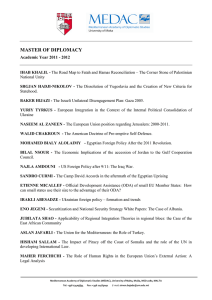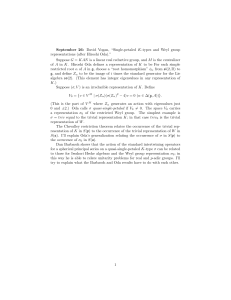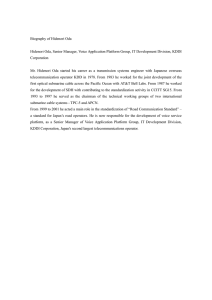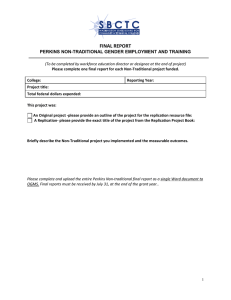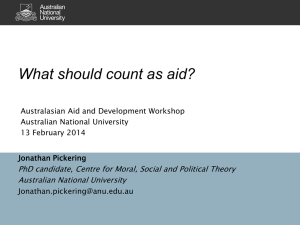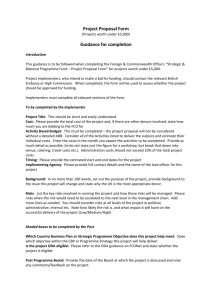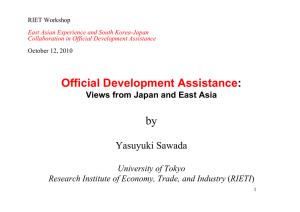Impact Evaluation considerations for Non-
advertisement
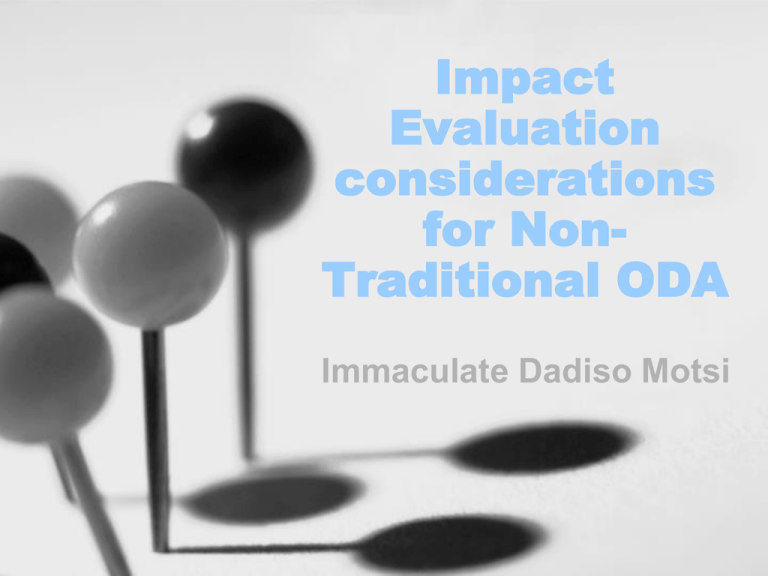
Impact Evaluation considerations for NonTraditional ODA Immaculate Dadiso Motsi Non-Traditional ODA Official Development Assistance Traditional Sources Non –Traditional Sources Case : China’s mining investment in the DRC China in Africa The Deal Barter - Infrastructure for Minerals Quid Pro Quo DRC - $6bn worth of roads, railways, hospitals, universities CHINA - 10million tonnes of copper and 400,000 tonnes of cobalt Key Assumption GOAL OUTCOME Improving Rate & Quality of Economic Growth Improved Infrastructure ACTIVITIES OUTPUTS New roads, universities etc; Less Minerals Building new infrastructure INPUTS Chinese Money & Labor Thesis 1. Non-Traditional ODA needs to be subjected to rigorous M &E 2. Traditional M & E techniques are not effectively applicable to nontraditional ODA (evaluation gap) 3. Traditional M & E can and should be adapted to be effectively applicable to non-traditional ODA (1) Non-Traditional ODA needs to be Monitored & Evaluated Insufficiency of current Congolese Feasibility Study (not the same as ex ante Evaluation) Social Impact implicit in the goal of improved rate and quality of economic growth Future ‘barter deals’ specifically & Non-Traditional ODA generally (2) Traditional M&E is not effectively suitable to NonTraditional ODA Complexities • • • • • • • Time value of money Fluctuating commodity prices Political uncertainty Volume of extractible minerals available Scale (national level) No precedent or Counter-Factual No transparency on certain aspects of the deal • Long-Term impact horizon GOAL OUTCOME Improving Rate & Quality of Economic Growth Improved Rate & Quality of Economic Growth ACTIVITIES OUTPUTS Building new infrastructure; Extracting more minerals New roads, universities etc; Less Minerals INPUTS BENEFITS Chinese Money & Labor; Congolese Minerals COST • Implicit assumption = intervention will lead to development objectives • Non-Traditional ODA = fundamentally a business transaction • Assumptive mismatch = Traditional M & E underemphasizes costs in the pursuit of establishing benefits (3) Traditional M&E can and should be adapted to Non-Traditional ODA Adaptation • Incorporation of Cost – Benefit Analysis Methodology • Active pursuit of negative externalities • Make open-ended policy recommendations (best practice given degree of complexity) -The End-
